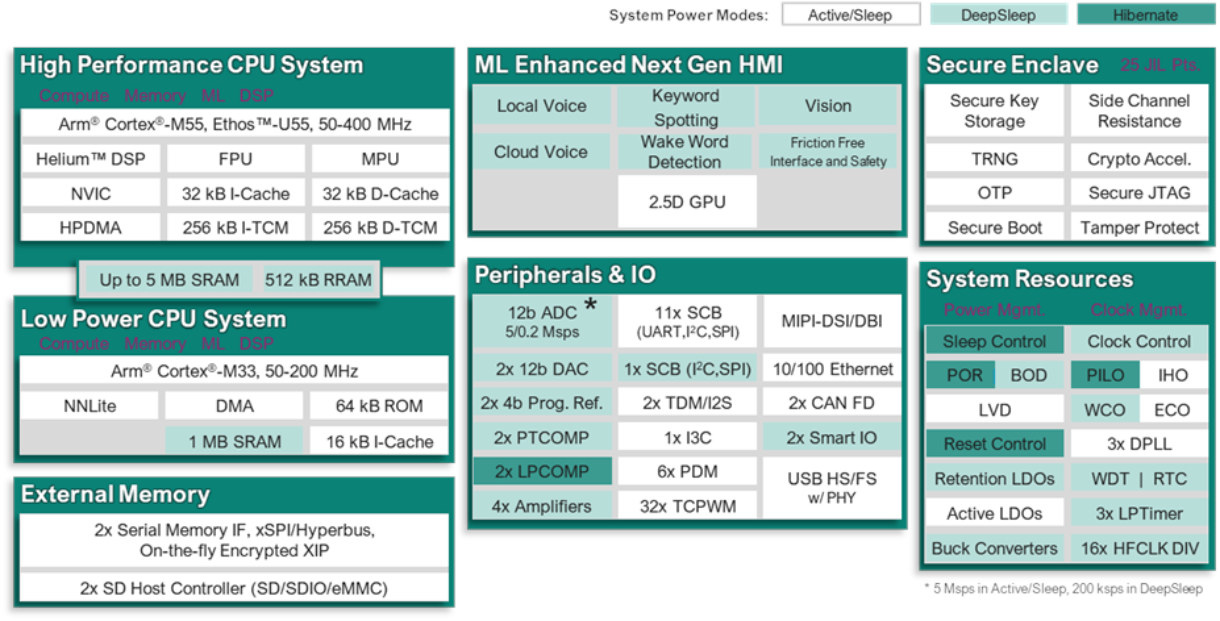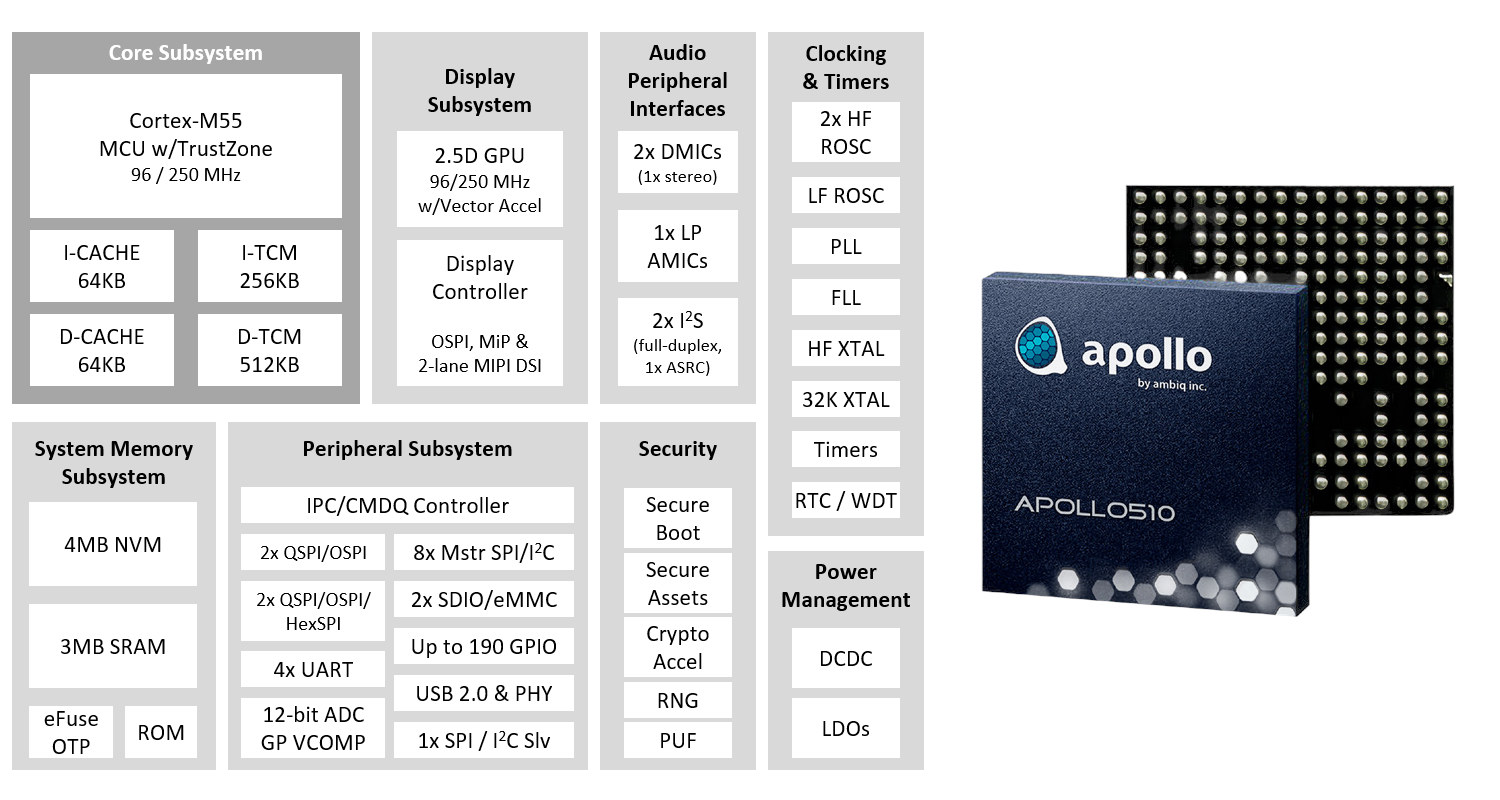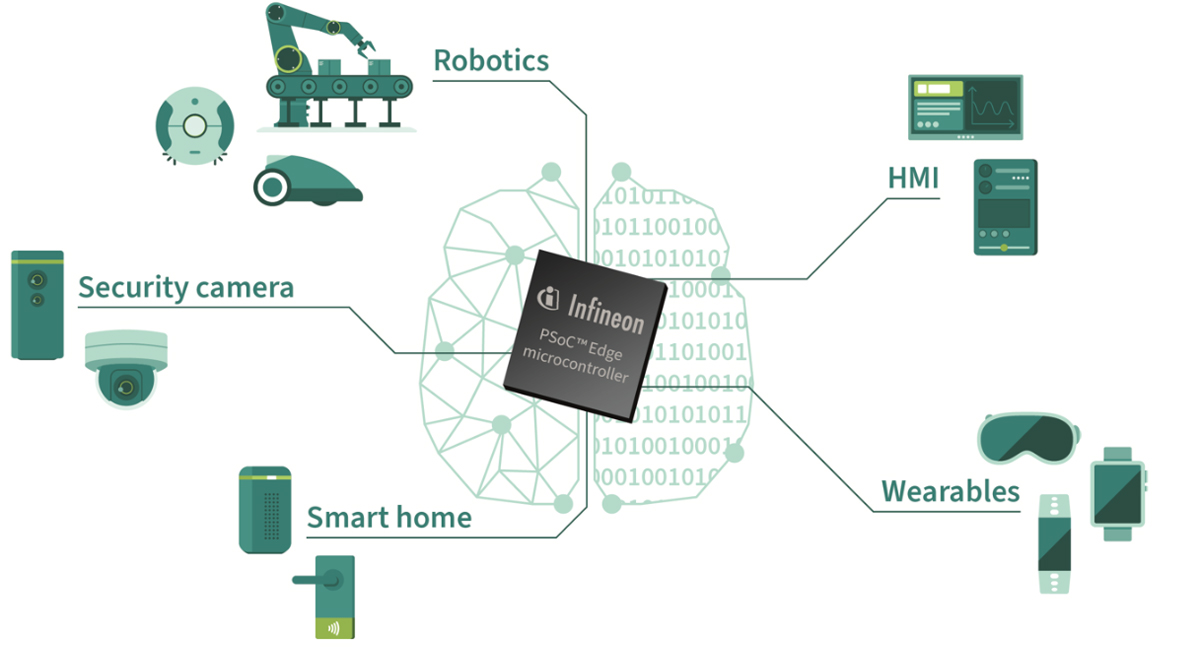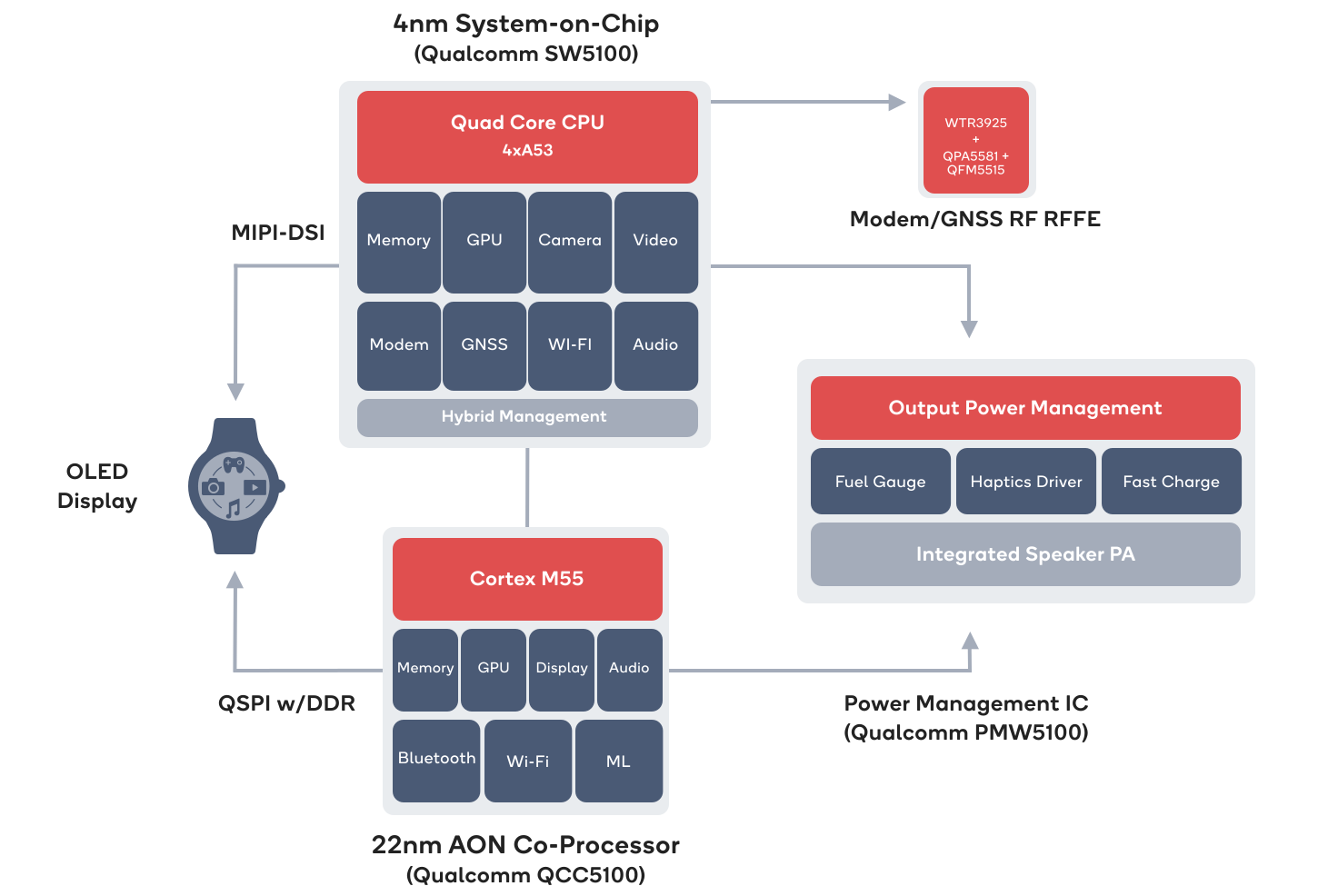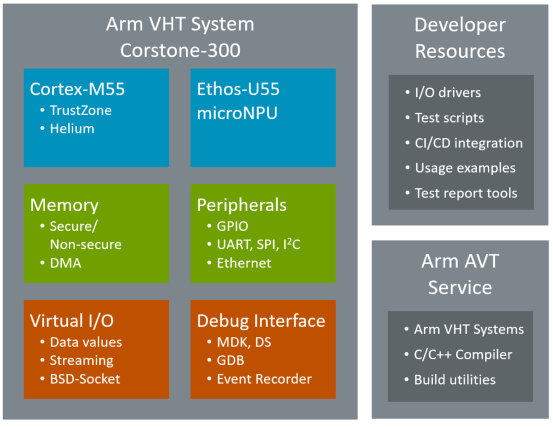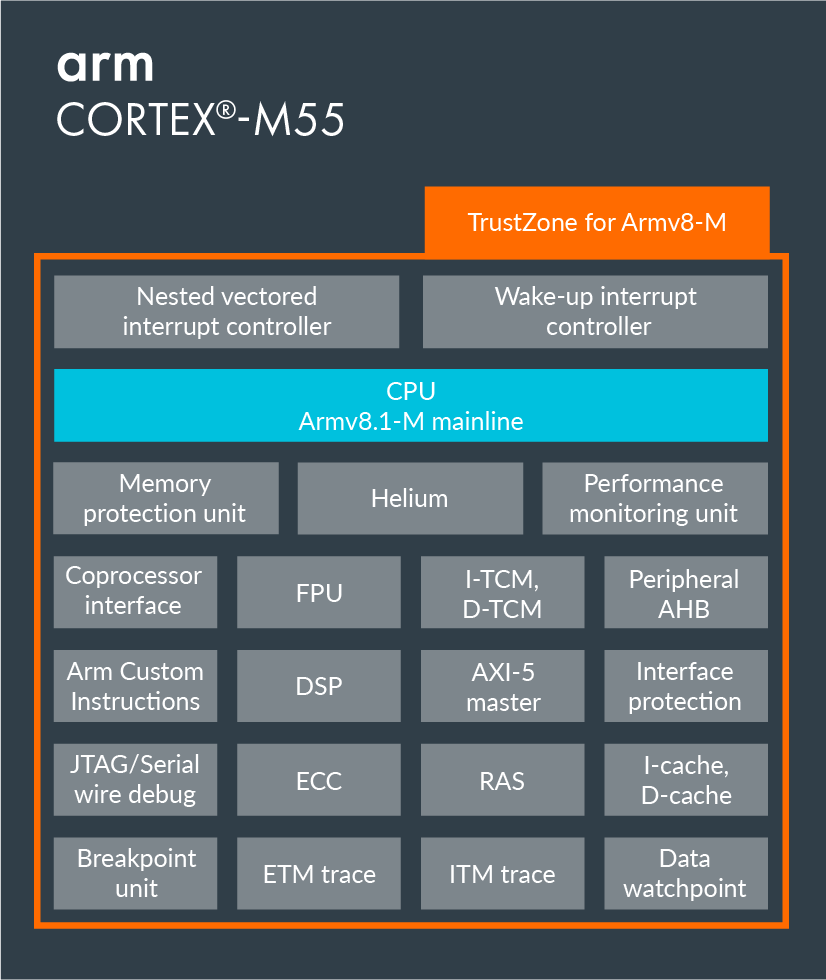Synaptics unveiled an extension to its Astra Native AI platform with the new SR series of MCUs. This new product family, unlike the Astra SL series released last year, isn’t comprised of Linux-capable application processors. Instead, the Arm Cortex-M55 microcontrollers focus on providing high-performance, AI-native processing for Edge AI applications leveraging a built-in Arm Ethos-U55 NPU. Built on the Arm Cortex-M55 core and the Arm Ethos-U55 neural processing unit (NPU), these MCUs are optimized for multimodal applications, including vision, audio, and voice processing. As indicated in the MCU’s block diagram (see below), the SR series also features an optional low processing SoC unit featuring an Arm Cortex-M4 @ 100MHz and a Synaptics micro NPU engine. Such a provision in this MCU is what allows the three operation tiers the company offers with the MCU series: performance, efficiency, and ultra-low-power modes, allowing intelligence across various power levels. The MCU can switch […]
Infineon PSOC Edge E81, E83, E84 Cortex-M55/M33 MCUs target Machine Learning-enhanced IoT, consumer and industrial applications
Infineon PSOC Edge E81, E83, and E84 MCU series are dual-core Cortex-M55/M33 microcontrollers with optional Arm Ethos U55 microNPU and 2.5D GPU designed for IoT, consumer, and industrial applications that could benefit from machine learning acceleration. This is a follow-up to the utterly useless announcement by Infineon about PSoC Edge Cortex-M55/M33 microcontrollers in December 2023 with the new announcement introducing actual parts that people may use in their design. The PSOC Edge E81 series is an entry-level ML microcontroller, the PSOC Edge E83 series adds more advanced machine learning with the Ethos-U55 microNPU, and the PSOC Edge E84 series further adds a 2.5D GPU for HMI applications. Infineon PSOC Edge E81, E83, E84-series specifications: MCU cores Arm Cortex-M55 high-performance CPU system up to 400 Mhz with FPU, MPU, Arm Helium support, 256KB i-TCM, 256KB D-TCM, 4MB SRAM (Edge E81/E83) or 5MB SRAM (Edge E84) Arm Cortex-M33 low-power CPU system up […]
Ambiq Apollo510 Arm Cortex-M55 MCU delivers up to 30x better power efficiency for AI/ML workloads
Ambiq Apollo510 Arm Cortex-M55 microcontroller delivers 30 times better power efficiency than typical Cortex-M4 designs and 10 times the performance of the Apollo4 Cortex-M4 sub-threshold microcontroller for AI and ML workloads. The new MCU also comes with 4MB NVM, 3.75MB SRAM, a 2.5D GPU with vector graphics acceleration that’s 3.5 times faster than the Apollo4 Plus, and support for low-power Memory-in-Pixel (MiP) displays. Like all other Ambiq microcontrollers, the Apollo510 operates at sub-threshold voltage for ultra-low power consumption and implements security with the company’s secureSPOT platform with Arm TrustZone technology. Ambiq Apollo510 specifications: MCU Core – Arm Cortex-M55 core up to 250 MHz with Arm Helium MVE, Arm TrustZone, FPU, MPU, 64KB I-cache, 64KB D-cache, 256KB I-TCM (Tighly Coupled Memory), 256KB D-TCM, Graphics – 2.5D GPU clocked at 96 MHz or 250 MHz with vector graphics acceleration, anti-aliasing hardware acceleration, rasterizer/full alpha blending/texture mapping, texture/framebuffer compression (TSC4, 6, 6A and […]
Infineon launches PSoC Edge Cortex-M55/M33 microcontrollers for enhanced AI and ML applications
Infineon’s new PSoC Edge series of microcontrollers integrates the Arm Cortex-M55 core with Helium DSP and the Ethos U55 NPU unit for advanced AI tasks. It also includes a power-efficient Arm Cortex-M33 core paired with an NNLite(DSP/NPU) for simpler AI tasks. This setup allows the device to be more efficient in varying load conditions. Infineon’s PSoC lineup is a configurable microcontroller powered by Arm Cortex-M4, Cortex-M3, or Cortex-M0+ cores. The main USP (Unique Selling Point) of this lineup is its configurable digital and analog components. This feature makes them somewhat similar to an FPGA, but an FPGA is far more difficult to program than these microcontrollers and they are also very power-hungry. The device is equipped with advanced HMI and “Always-on” capability. “Always-on” is a feature of this device to constantly monitors and responds to signals automatically, making it suitable for smart homes, security, wearables, robotics, and many more. Key […]
Qualcomm Snapdragon W5+ and W5 wearables platforms promise higher efficiency and performance
It’s been a while since Qualcomm released a new platform for wearables. More exactly, the Snapdragon 4100 platform was announced a little over two years ago, and now Qualcomm has just introduced the Snapdragon W5+ and W5 Gen 1 platforms with up to 50% longer battery, twice the performance, and 30 percent smaller size. Just like the Snapdragon 4100, the Snapdragon W5 comes with four Arm Cortex-A53 processor (SW5100), but is clocked at 1.7 GHz and manufactured with a 4nm process, while the always-on (AON) co-processor is upgraded from a Cortex-M0 chip to the QCC5100 Cortex-M55 chip manufactured with a 22nm process. Snapdragon W5+/W5 specifications: W5100 SoC CPU – Quad-core Cortex-A53 processor @ up to 1.7 GHz GPU – Qualcomm Adreno A702 @ up to 1 GHz with OpenGL ES 3.1 API support DSP – Qualcomm Hexagon DSP V66K System Memory – 16-bit LPDDR4 up to 2,133 MHz […]
Cortex-M55 based Arm Virtual Hardware is now available in AWS Cloud
The Arm DevSummit 2021 is taking place on October 19-21, and the first announcements from Arm are related to IoT with “Arm Total Solutions for IoT delivering a full-stack solution to significantly accelerate IoT product development and improve product ROI”, “Project Centauri” aiming to achieve for an extensive Arm Cortex-M software ecosystem in the way that Project Cassini does for the Cortex-A ecosystem, starting with support for PSA Certified and Open-CMSIS-CDI cloud-to-device specification, and Arm Virtual Hardware based on Corstone-300 IoT platform with a Cortex-M55 MCU core and an Ethos-U55 microNPU accessible from Amazon Web Services. The first two are quite abstract right now, and more information may become available in the future, but the Arm Virtual Hardware is available now from AWS as a public beta, with 100 hours of free AWS EC2 CPU credits for the first 1,000 qualified users. The virtual hardware does not emulate only the […]
Arm Introduces Cortex-M55 MCU Core, Arm Ethos-U55 microNPU for Cortex-M Microcontrollers
Artificial Intelligence and the Internet of Things often go hand in hand with AIoT being a new buzz word that came up last year or so. But for AIoT to scale we need ultra-low-cost, low-power solutions capable of doing inference at the sensor node level, and this is only possible with microcontrollers. To achieve this goal, Arm has just unveiled the Arm Cortex-M55 microcontroller core optimized for artificial intelligence workloads that delivers up to a 15x uplift in ML performance and a 5x uplift in DSP performance with greater efficiency, as well as Ethos-U55 microNPU designed for Cortex-M microcontrollers that need even more AI performance (up to 480 times faster), while consuming as little power as possible. Arm Cortex-M55 Key features and specifications: Architecture – Armv8.1-M Bus interface – AMBA 5 AXI5 64-bit master (compatible to AXI4 IPs) Pipeline – 4-stage (for main integer pipeline) Security – Arm TrustZone technology […]



